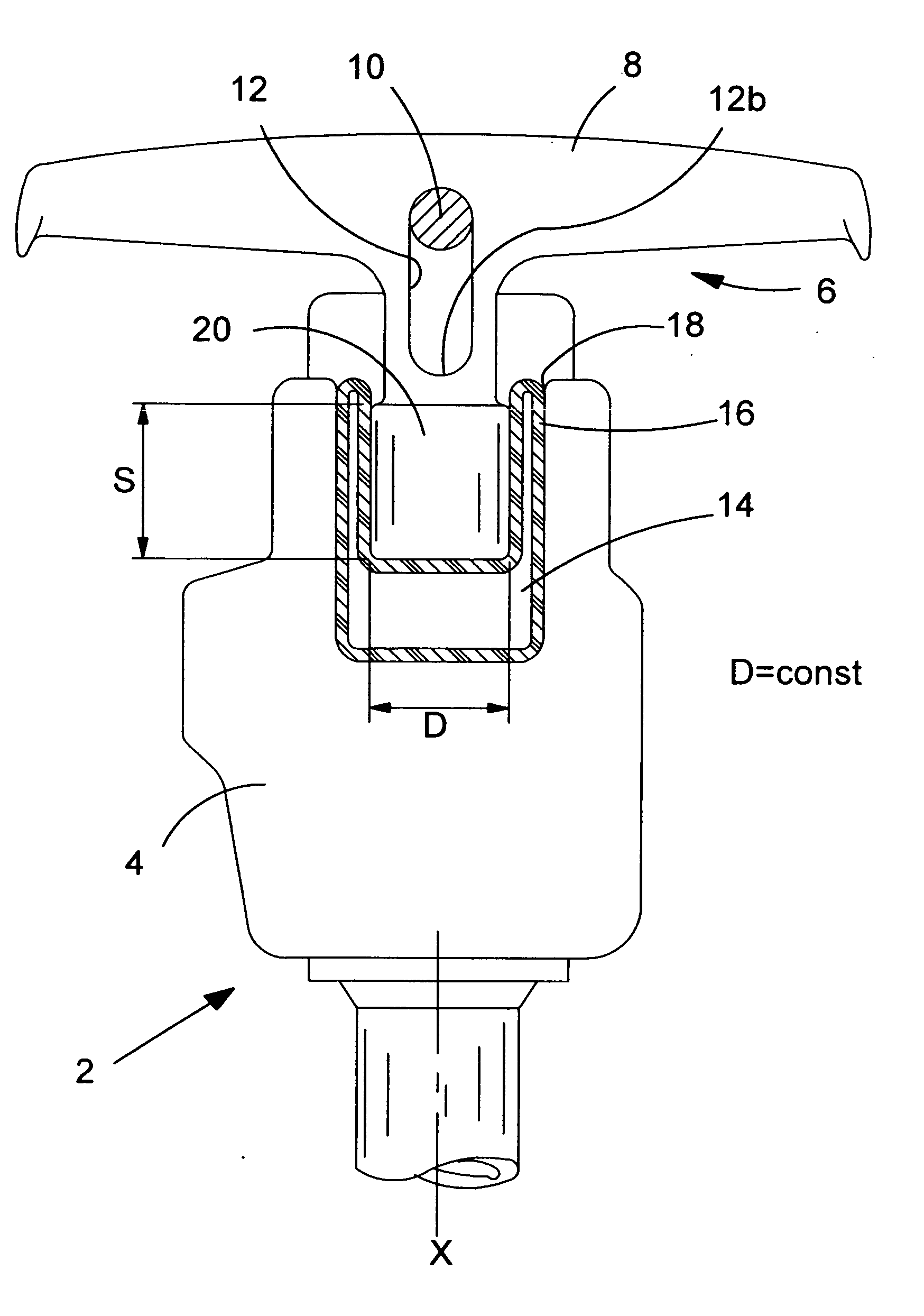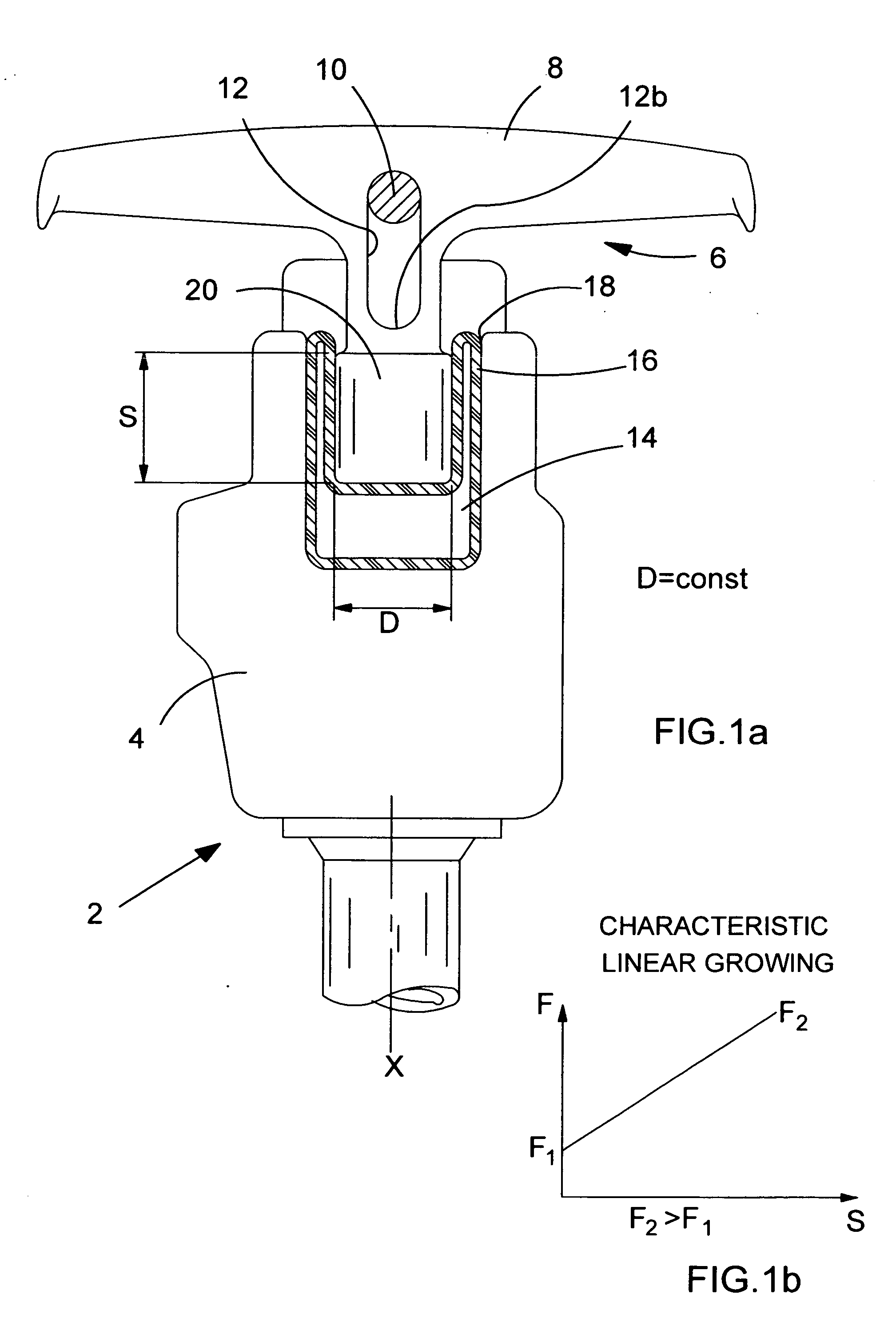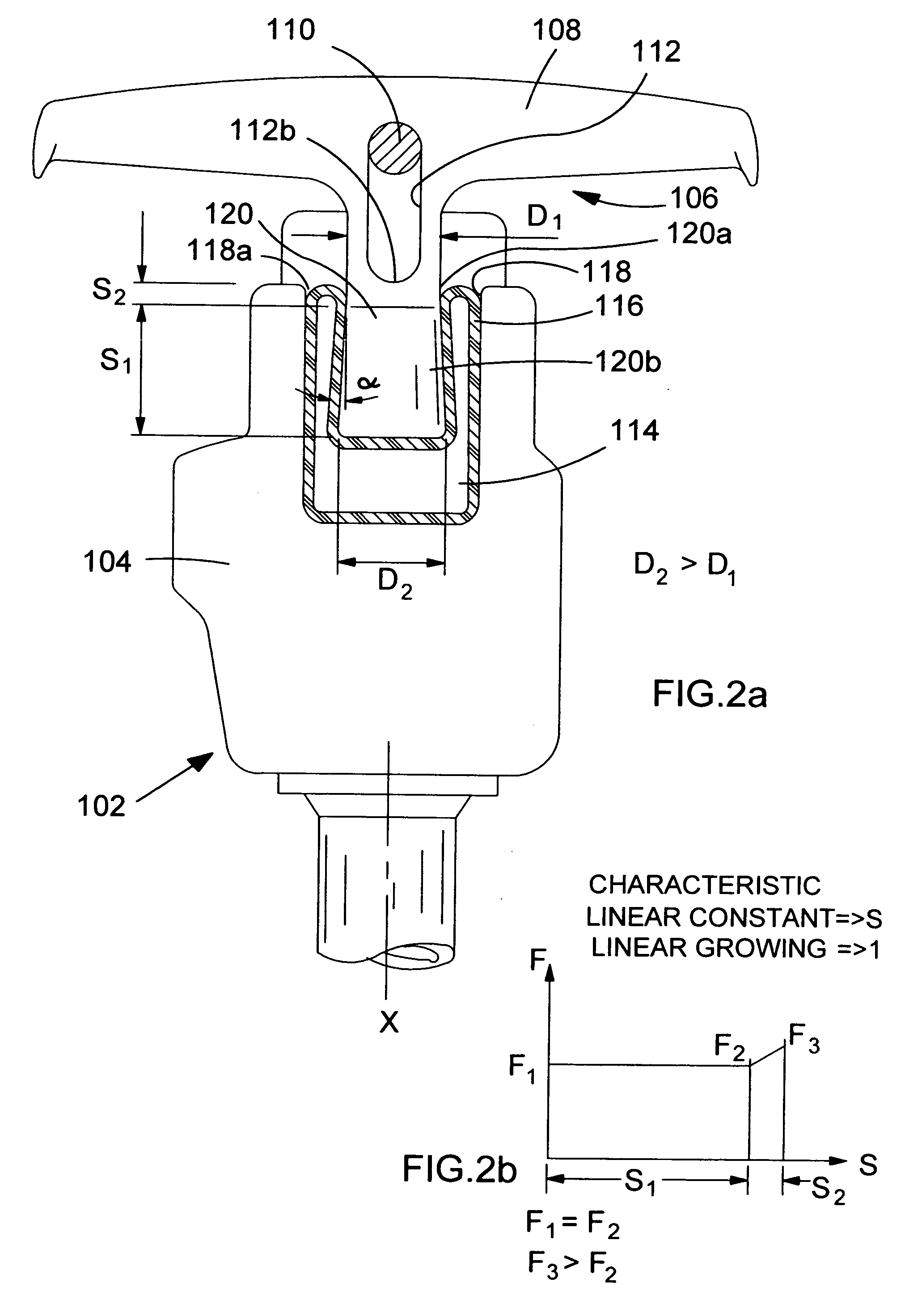Handle assembly for hammer apparatus
a technology of hammer and handle, which is applied in the direction of shock absorbers, portable power-driven tools, manufacturing tools, etc., can solve the problems of large vibration and detrimental to the health of users
- Summary
- Abstract
- Description
- Claims
- Application Information
AI Technical Summary
Benefits of technology
Problems solved by technology
Method used
Image
Examples
second embodiment
[0034] It has been found that changing the profile of engaging portion 20 changes the characteristic of force transmitted to the hammer housing versus distance of penetration of the engaging handle (and thus amount of compression of air chamber 14). a handle assembly 4 for the reciprocating hammer is shown in FIG. 2a. Parts common to the embodiment of FIG. 1 are shown with like reference numerals but increased by 100.
[0035] In this embodiment, the engaging member 120 of the handle assembly 106 is partially conical in shape. The diameter of the engaging member 120 increases from D1 at the upper most part of the engaging member 120 to a distance D2 at the lowermost part of the engaging member 120. This changes the characteristic (FIG. 2b) of force transmitted to the housing versus the extent to which the engaging member 120 is pushed into recess 118 and into engagement with the rubber membrane 116.
[0036] Engaging member 120 comprises two portions of different shape. A cylindrical por...
third embodiment
[0038] a handle assembly for a reciprocating hammer is shown in FIG. 3a, with parts common to the embodiment of FIG. 1 shown with like reference numerals but increased by 200.
[0039] The handle assembly 206 comprises handles 208 connected to an engaging member 220. The handle assembly 206 is slidably disposed on the hammer housing 204 by engagement of guide rod of 210 with elongate aperture 212. In this embodiment, engaging member 220 is partially conical in shape and has sides 222 disposed at an angle to axis X that converge on axis X from the uppermost part of engaging member 220 to the lowermost part. The diameter of the engaging member 220 at its uppermost point is D2, and its diameter at its lowermost point is D1.
[0040] This results in a non-linear characteristic of force transmitted to the reciprocating hammer by a user against the distance of insertion of engaging member 220 into recess 218 as shown in FIG. 2b. When engaging member 220 is located outside of recess 218 the for...
fourth embodiment
[0041] a handle assembly for a reciprocating hammer is shown in FIG. 4a, with parts common to the embodiment of FIG. 1 shown with like reference numerals but increased by 300.
[0042] In this embodiment engaging member 320 comprises a circumferential groove 324. This means that the engaging member 320 has a cylindrical portion 320a with sides that are disposed parallel to axis X, a converging portion 320b with sides that converge towards axis X, and a diverging portion 320c with sides that diverge away from axis X. This gives rise to the characteristic of transmitted force against distance of insertion of engaging member 320 shown in FIG. 4b.
[0043] A first region S1 on the graph represents a user pushing handles 308 to move diverging portion 320c of engaging member 320 past opening 318a of recess 318 to compress air cushion 314. Here, the curve of force against distance is flat and F1=F2. This is consistent with the behaviour of an engaging member having diverging sides such as that...
PUM
 Login to View More
Login to View More Abstract
Description
Claims
Application Information
 Login to View More
Login to View More - R&D
- Intellectual Property
- Life Sciences
- Materials
- Tech Scout
- Unparalleled Data Quality
- Higher Quality Content
- 60% Fewer Hallucinations
Browse by: Latest US Patents, China's latest patents, Technical Efficacy Thesaurus, Application Domain, Technology Topic, Popular Technical Reports.
© 2025 PatSnap. All rights reserved.Legal|Privacy policy|Modern Slavery Act Transparency Statement|Sitemap|About US| Contact US: help@patsnap.com



